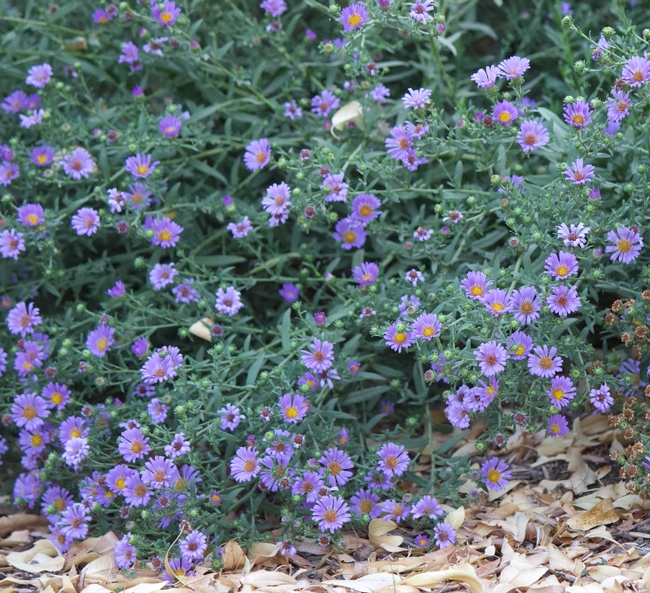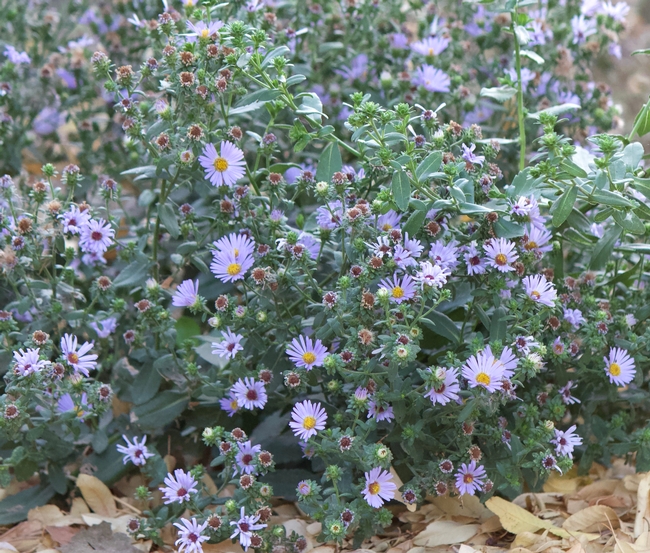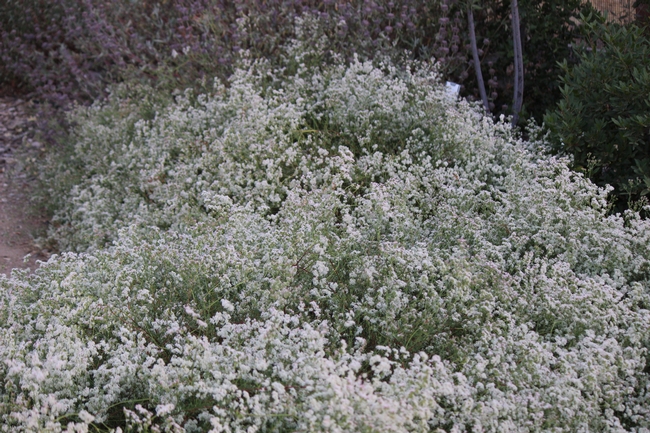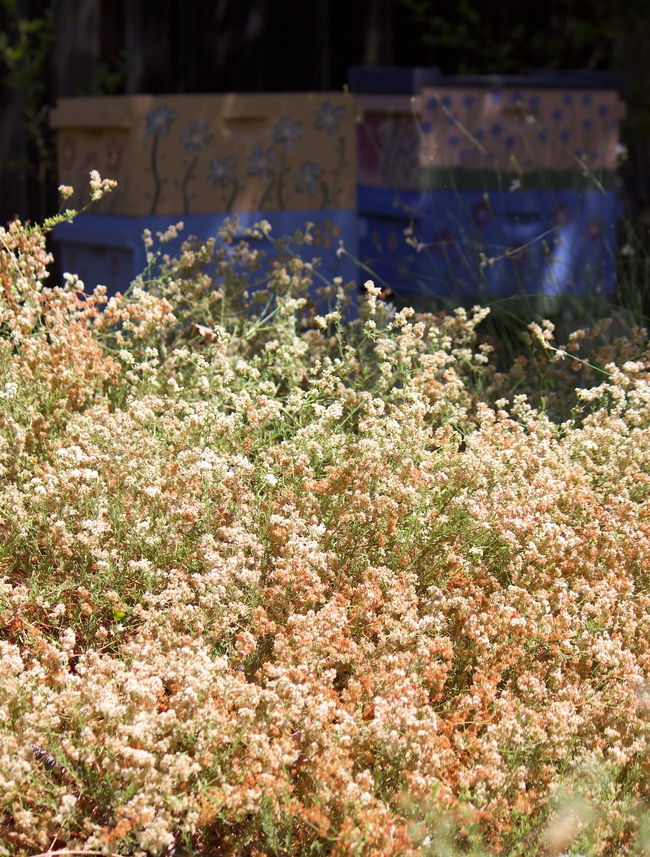- Author: Christine Casey
As we move into the hottest, driest part of the summer, many of our gardens are looking a bit worn out. It's certainly easier to stay inside where it's cool and put garden tasks off until the fall.
But the bees are still out there doing their work to bring us food and create habitat for wildlife. What are the plant options for California gardens that will stand up to the heat with little water (all these plants are rated ‘low' in WUCOLS) and be loved by bees?
One great choice is our native California aster, Symphyotrichum chilense. Unlike asters native to the eastern US and Europe, which need regular water in California, this one thrives on low water. Shown here are the cultivars, 'Purple Haze' and 'Point St. George'.
'Purple Haze' is about 2 feet tall, while 'Point St. George' grows low to the ground. The former has deeper purple flowers than in typical for this species. Both need full sun to light shade and will spread (a lot!) to cover an area. Consider yourself warned when choosing an area to plant these in.


In our studies of bee plant preference at UC Davis we found our native aster to be one of the most attractive plants to California native bees. The late summer flowers are a critical source of nectar and pollen at a time when not a lot is blooming.


The flowers age from white to rust in later summer and provide fall color in the garden into winter.
Finally, for intense late summer color, nothing beats California fuchsia, Epilobium canum. There are numerous cultivars available, but my favorite is ‘Catalina', which reaches about 3 feet tall including flowers. California fuchsia will grow in sun or shade but blooms best in full sun. As with the aster, this plant spreads over time, making it a great filler in areas bounded by paths, buildings, or roads. These serve as barriers to keep it contained, while the plant can take the hot conditions often found in these spots.
Plant all three this fall for a show next summer!
- Author: Christine Casey
On Saturday, March 14, the California Center for Urban Horticulture (CCUH) sponsored a Pollinator Gardening Workshop as part of their Sustainable Backyard series. Co-sponsors were the UC Davis Department of Entomology and Nematology and the UC Davis Arboretum. Over 100 participants attended on a beautiful day that was perfect for viewing both pollinators and plants.
Along with me, entomologists on the program were Robbin Thorp, Neal Williams, and Eric Mussen. Participants learned about both wild bees and honey bees, their importance to our food supply, and UC Davis bee research. Providing for bees in urban gardens and how this is done at the Häagen-Dazs Honey Bee Haven were also discussed.
Ellen Zagory, Director of Horticulture at the UC Davis Arboretum, spoke about her favorite bee plants and presented design ideas for successional bloom.
In the afternoon, workshop attendees had the opportunity to see these ideas in practice. After visiting the Haven, where Robbin and I answered questions, participants could head to the Arboretum plant sale for a “workshop only” hour of sales.
If you weren't able to make it, the good news is that the presentations will be available on the CCUH web site. Other Arboretum plant sale dates this spring are April 5, April 26, and May 17.
And mark your calendars for May 9, National Public Gardens Day. There will be an open house at the Haven from 5:30 to 7 that evening, with a garden tour at 6.







